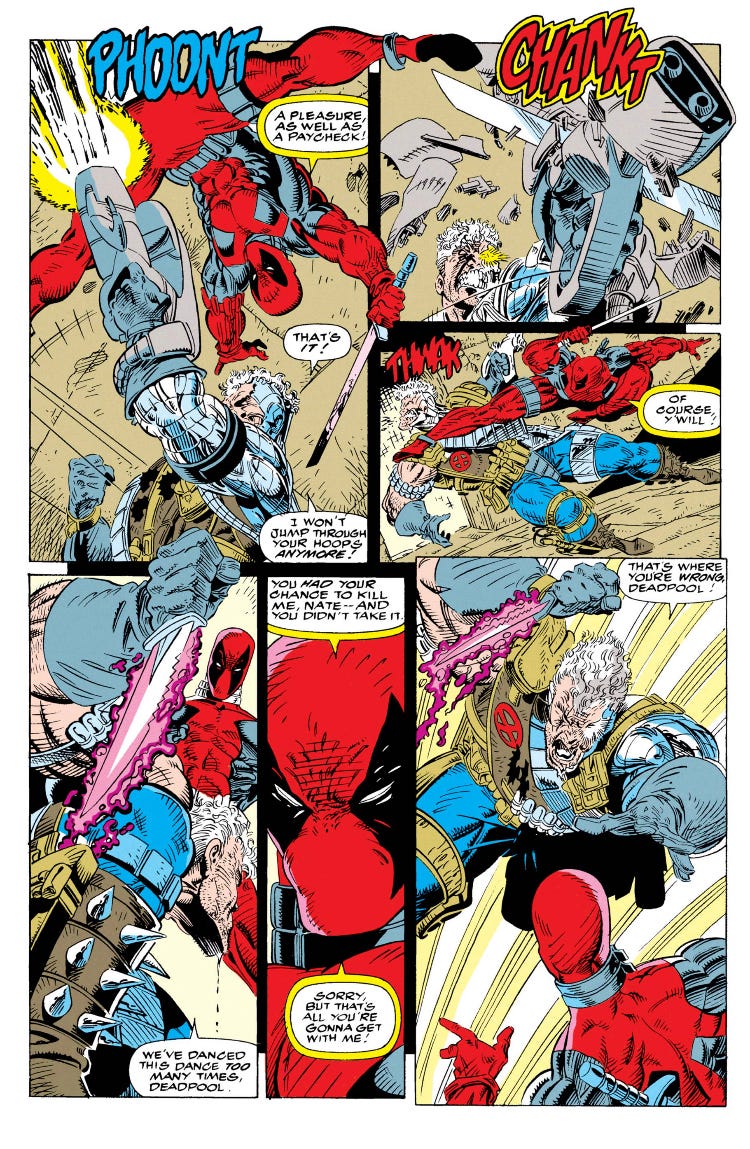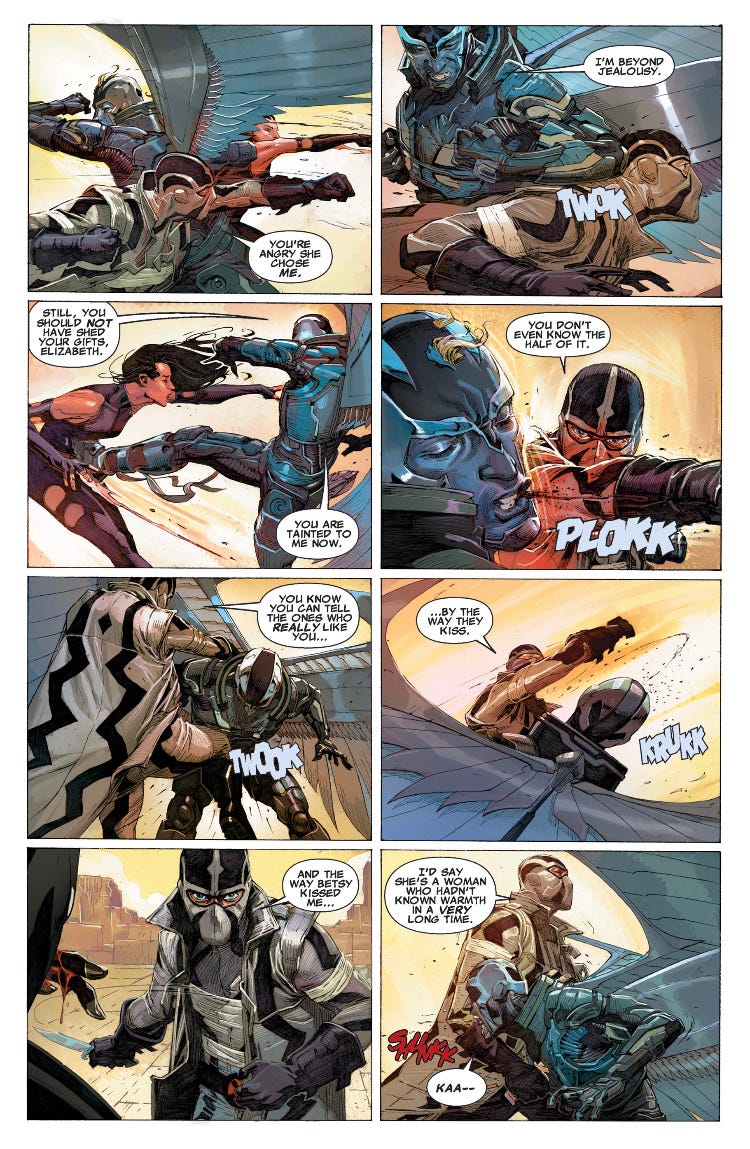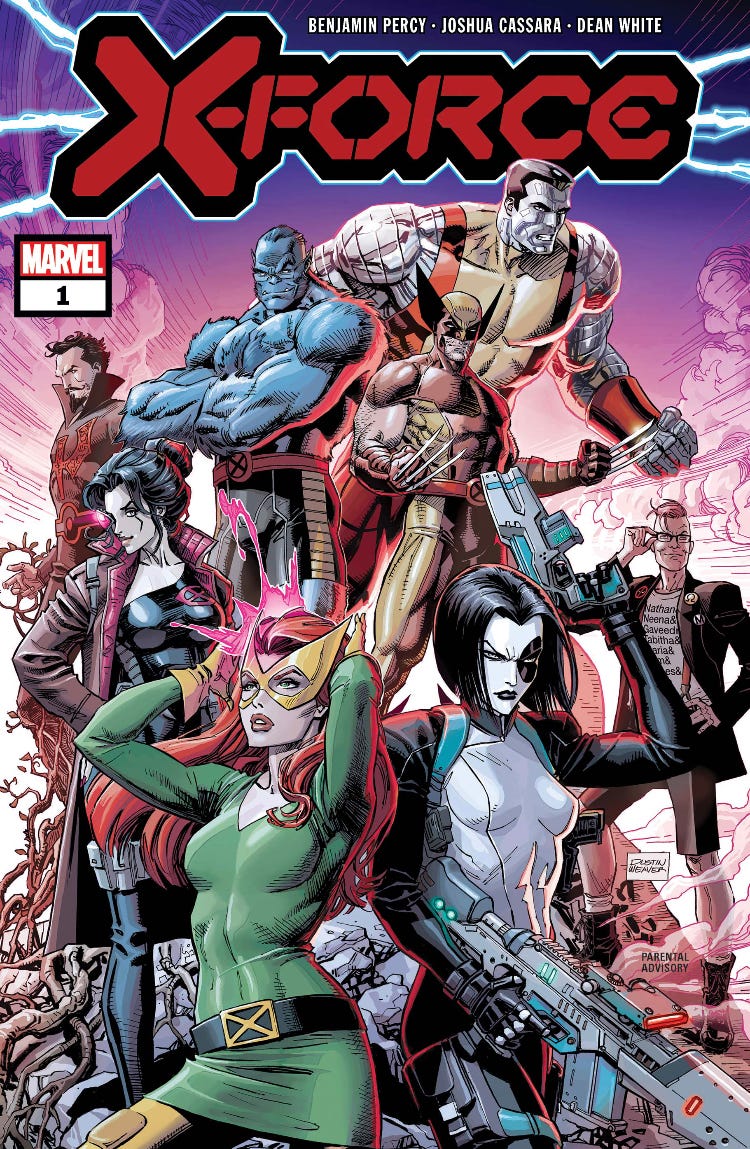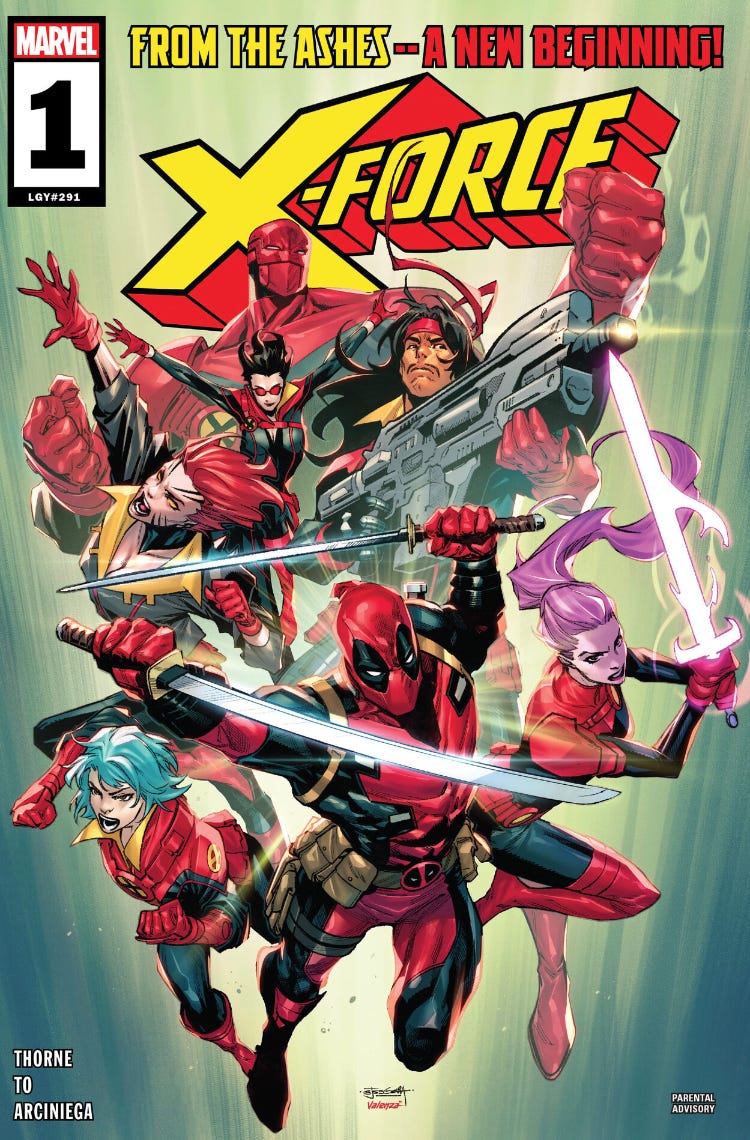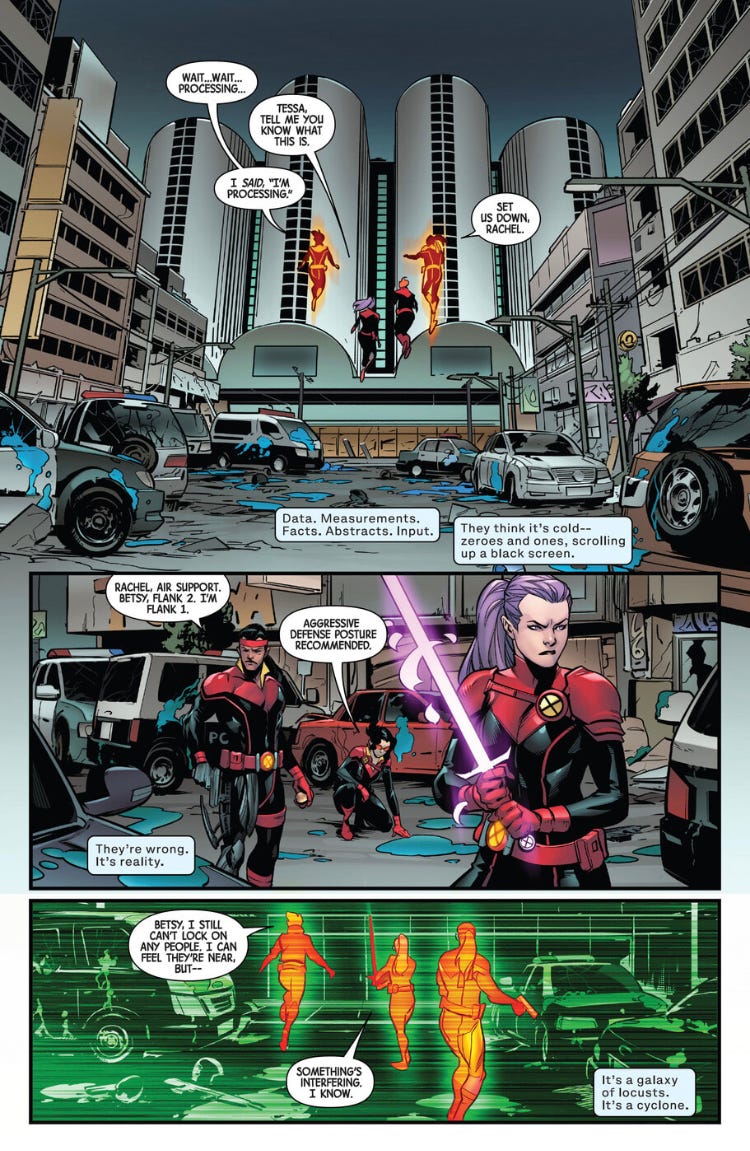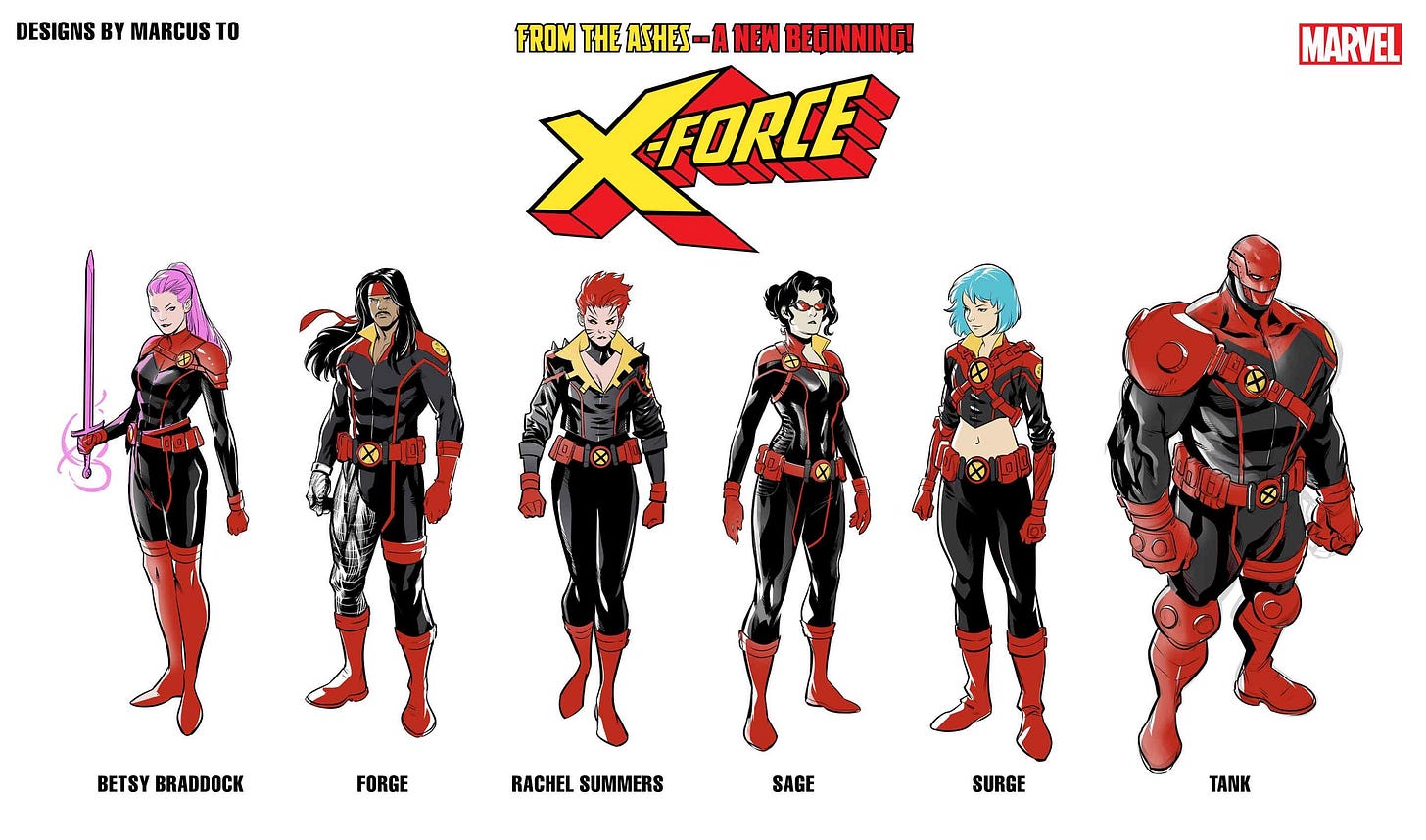The Many Iterations of X-Force
Geoff Thorne and Marcus To’s new series is the latest in a long list of X-Force comics
If you’re a lifelong X-Men fan like me, then you’re probably already well aware of the line wide “From the Ashes” relaunch being spearheaded by editor
(you can subscribe to his Substack here) following the end of the Krakoa Era. The relaunch kicked off with four new titles in July (X-Men, Phoenix, NYX, and X-Force) with plenty more coming in the following months.The most recent new series that just released last week is X-Force from the creative team of Geoffrey Thorne, Marcus To, and Erick Arciniega. To be totally honest, this was the book I was least excited about of those first four. That’s not to say I wasn’t curious about reading it, but I just wasn’t as interested in it as the other three books. So imagine my surprise when it immediately became my favorite debut issue of the relaunch thus far when I sat down and read it. I loved the premise of the book (more on that later), the narrative choice of experiencing the story through Sage’s analytical brain, Marcus To’s beautiful illustrations and character designs, Arciniega’s gorgeous color palette, and the clever narrative use of Deadpool. After reading through it a few times, it got me thinking about the long history of X-Force comics and the various creators who have brought their unique visions to the many versions of the team.
The original series by Fabian Nicieza and Rob Liefeld
Few comic book series are as emblematic of the early-1990s as X-Force. Spinning out of New Mutants #100, X-Force was a team founded by Cable with the intent of finding a middle ground between the ideologies of Charles Xavier and Magneto. Its original roster was Cable, Domino, Shatterstar, Warpath, Cannonball, Boom-Boom, and Feral. X-Force #1 launched in June of 1991 and sold a whopping five million copies to vendors. That remains the second most copies sold of any single issue of a comic book in history. Not bad. Liefeld plotted and illustrated the early issues with Nicieza providing the dialogue, and they can best be described as “action oriented.” It’s not always clear why that action is taking place, but it was portrayed with a visual flair that was all the rage during this time period. Issues typically revolved around X-Force getting into pitched battles with the Mutant Liberation Front (a mutant terrorist organization led by Stryfe) to prevent them from carrying out their planned attacks.
Liefeld would leave the title after only twelve issues to go found Image Comics, but Nicieza would stay on the book as writer for forty-three total issues (plus four annuals). My personal favorite stretch would come when artist Greg Capullo would join for X-Force #15-27. His style perfectly suited the “grim and gritty” ‘90s aesthetic, and it took Nicieza’s knack for action-packed storytelling to another level. As far as I’m concerned, this was the peak of the original X-Force series. It maintained the darker and more violent tone that distinguished itself from the two primary X-Men titles of Uncanny X-Men and X-Men (the latter of which was also written by Nicieza at this time) while also still incorporating the mutant metaphor into the storytelling.
The series would continue to roll on throughout the 1990s and into the 2000s, but it had really lost some steam by then. That’s when a new creative team would come aboard to make some truly radical changes.
Peter Milligan and Mike Allred get satirical
I’ve written before about what a massive year 2001 was for the X-Men line of comics, and one of the major reasons for that was the complete reinvention of X-Force by Peter Milligan and Mike Allred with X-Force #116. This issue is the only comic I’ve ever purchased where the store owner made me get my mom’s permission before selling it to me, so that should give you an idea about how different it was from the previous 115 issues. Instead of a more militant version of the X-Men, this new team was a bunch of reality television celebrities trying to use their mutant abilities to become rich and famous while their superheroics are filmed for a television audience. They are living a sex, drugs, and rock and roll lifestyle when we first meet them. The lineup in X-Force #116 is Zeitgeist (team leader), Battering Ram, Anarchist, U-Go Girl, Sluk, Gin Genie, La Nuit, Phazm, and Doop. The majority of the first issue revolves around Zeitgeist trying to bury a traumatic memory while he and others on the roster indulge in debauchery ahead of a mission. That mission is to rescue a boy band called Boyz R Us who are being held for ransom by some gunmen. Piece of cake. They swoop in to save the day until an attack helicopter shows up and massacres the entire team save for U-Go Girl, Anarchist, and Doop. This ain’t your father’s X-Force.
The insane levels of violence combined with the bright and cartoony artwork made the book immediately stand out from everything else Marvel was publishing at the time. As a reader, you never knew what might happen from issue to issue or if your favorite character would survive any given mission. It added a kind of excitement and stress to each month’s book that made it wholly unique.
The other element was Milligan’s willingness to push the envelope. The most infamous example of this was when news leaked that he planned to add the late Princess Diana to the roster of the team. The rationale being that she was a great example of someone famous for being famous. Alas, negative reaction ended up killing the story. She ended up being replaced with a fictional pop star instead.
While this was easily one of my favorite runs of X-Force ever published, it also didn’t last very long. That is to say, it didn’t last long being called X-Force. Much like how New Mutants was canceled and replaced with X-Force to better convey how new and different it was from its predecessor, X-Force was canceled and replaced with X-Statix. That’s how this comic and its core characters are best remembered today, but some of us still remember where it all started.
The black ops era begins with Craig Kyle, Christopher Yost, and Clayton Crain
After a few attempts at launching a new X-Force series in the 2000s (including a miniseries from the original creative team of Rob Liefeld and Fabian Nicieza in 2004), Marvel found a version that would stick with the debut of a new X-Force ongoing series in 2008 from Craig Kyle, Christopher Yost, and Clayton Crain. This new team was a black ops squad formed by Cyclops to deal with threats to mutants in a more “permanent” way than the primary X-Men teams could. This squad was initially comprised of Wolverine, X-23, Warpath, and Wolfsbane. On top of that, they were given snazzy new black costumes in lieu of their primary costumes at the time. While not as overtly gruesome as the Milligan and Allred series, this book was certainly darker and more serious in tone.
The book would eventually be canceled in 2010 and rebooted that same year as Uncanny X-Force with a creative team of Rick Remender and Jerome Opena. The same basic premise existed for the book as a black ops team delivering lethal solutions to threats facing mutants. The new roster was made up of Wolverine, Deadpool, Archangel, Psylocke, and Fantomex. This quickly became one of my favorite runs of X-Force, and it was my favorite title in the X-Men line for the 2010s up until the start of the Krakoa Era.
The major arcs of the run dealt with Apocalypse and those he had most impacted. One arc dealt with the possible reincarnation of Apocalypse in the form of a child nicknamed Evan, and it probed the idea of nature versus nurture with whether he was destined to become the evil mutant responsible for so much death and destruction throughout the ages or if he could be raised to be a good person with the right upbringing. The other major arc dealt with Archangel (Apocalypse’s former Horseman of Death) and whether he was destined to become the new Apocalypse.
X-Force becomes the Krakoan C.I.A. under Benjamin Percy and Joshua Cassara
There were a few different X-Force series following the conclusion of Uncanny X-Force in 2012, but the most original and enduring series was the one launched as part of the “Dawn of X” series of titles in 2019. Written by Benjamin Percy with art by Joshua Cassara, X-Force dealt with the intelligence apparatus tasked with protecting the nascent mutant nation-state of Krakoa. The initial lineup consisted of Wolverine, Jean Grey, Beast, Black Tom Cassidy, Sage, Domino, Kid Omega, and Colossus.

The series explores what lengths people are willing to go to in defense of their nation and what lines should never be crossed. Beast slowly devolves into the villain of the series as begins acting more and more on his own without the knowledge of the rest of the team. As the war crimes and atrocities continue to pile up, the rest of the team is forced to reckon with his actions. The series ran for an incredible fifty issues from 2019-2024, and Percy remained the writer for the entirety of the run.
Geoffrey Thorne and Marcus To synthesize something new out of the familiar
That brings us to the newest X-Force series from Geoff Thorne and Marcus To that debuted last week. There has only been one issue thus far, but it became apparent to me right away that Thorne was embracing elements from some of the previous X-Force series to create something new. This iteration is founded by Forge, and its members include Sage, Captain Britain, Askani, Surge, and Tank. This first issue also features an appearance by Deadpool, but Forge makes it abundantly clear that he is not on the team. I initially thought that this would be a running joke with Deadpool constantly showing up uninvited, but I was convinced by the end of the issue that this really was just a guest appearance. The premise for this new series is that Forge has used his mutant ability to build a machine that supercharges his own mutant ability to allow him to build a device that detects global threats before they have fully developed. He then constructs a rapid strike team to deal with these threats before they spin out of control. It’s a nice melding of the original squad that’s a bit more militant than your typical X-Men squad and the black ops squads that cropped up more recently. My favorite aspect of the first issue was having Sage be the point of view character.
I’ve always found her to be an interesting character with the way her analytical supercomputer brain functions. She has typically been a “woman in the chair” type of character who stays behind and provides analysis and guidance to those in the field. Putting her front and center on the frontlines where she can read and instantly adapt to situations in real time is an excellent decision. I don’t know if she will continue to be the point of view character in future issues or if it will rotate throughout the cast, but I really appreciated it for this issue.
I’m also a big fan of the new uniforms for the team. Marcus To’s designs and Erick Arciniega colors make them feel practical while still standing out and having a distinctly classic mutant vibe to them. They feel almost like a modern take on the uniforms from X-Treme X-Men that debuted in 2001 from Chris Claremont and Salvador Larocca (probably doesn’t hurt that Sage was prominently featured on that team).
I’m very excited to see where the series goes from here and how it will continue to add to the legacy that has already been carved out by X-Force series that have come before it.



